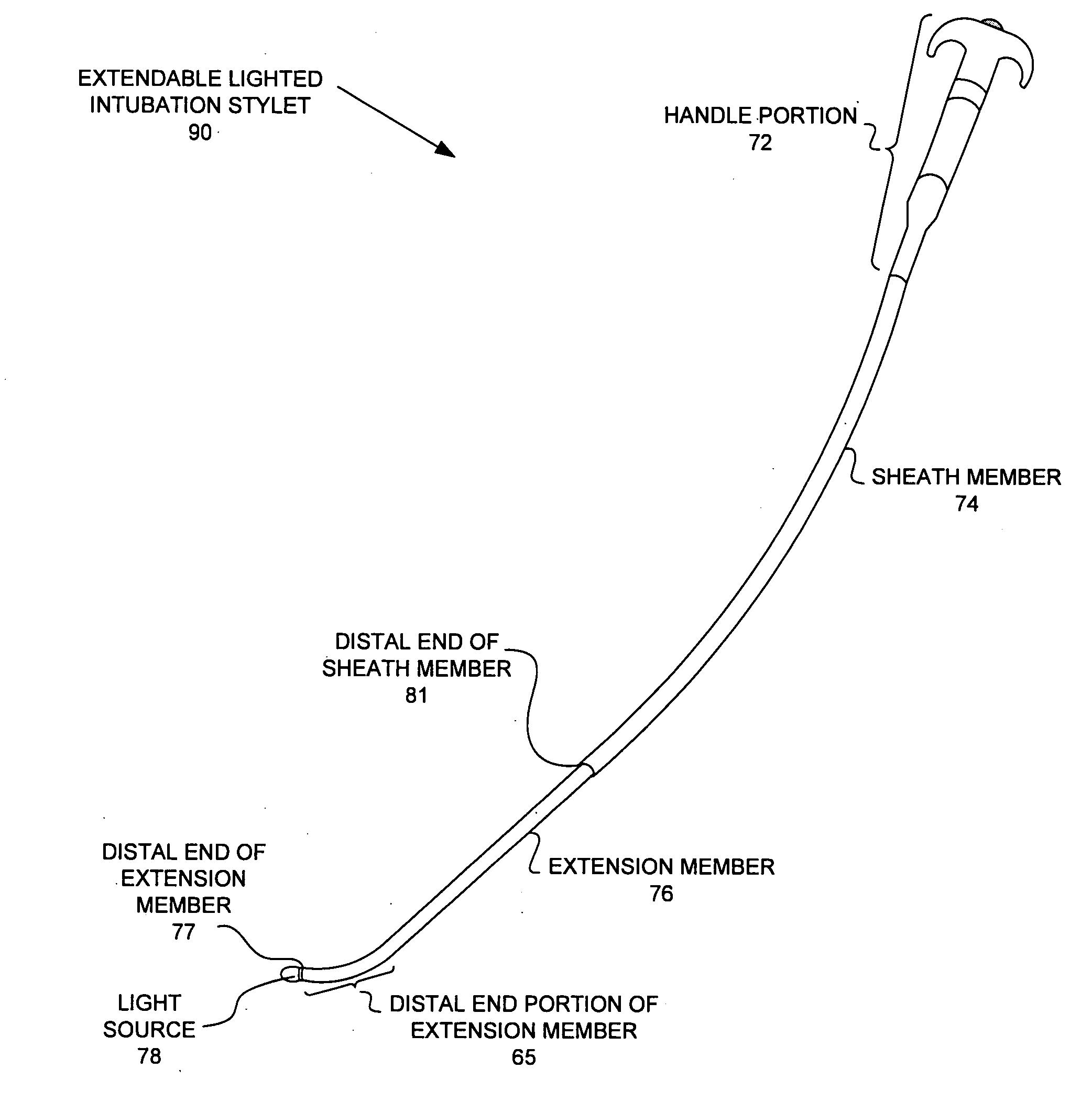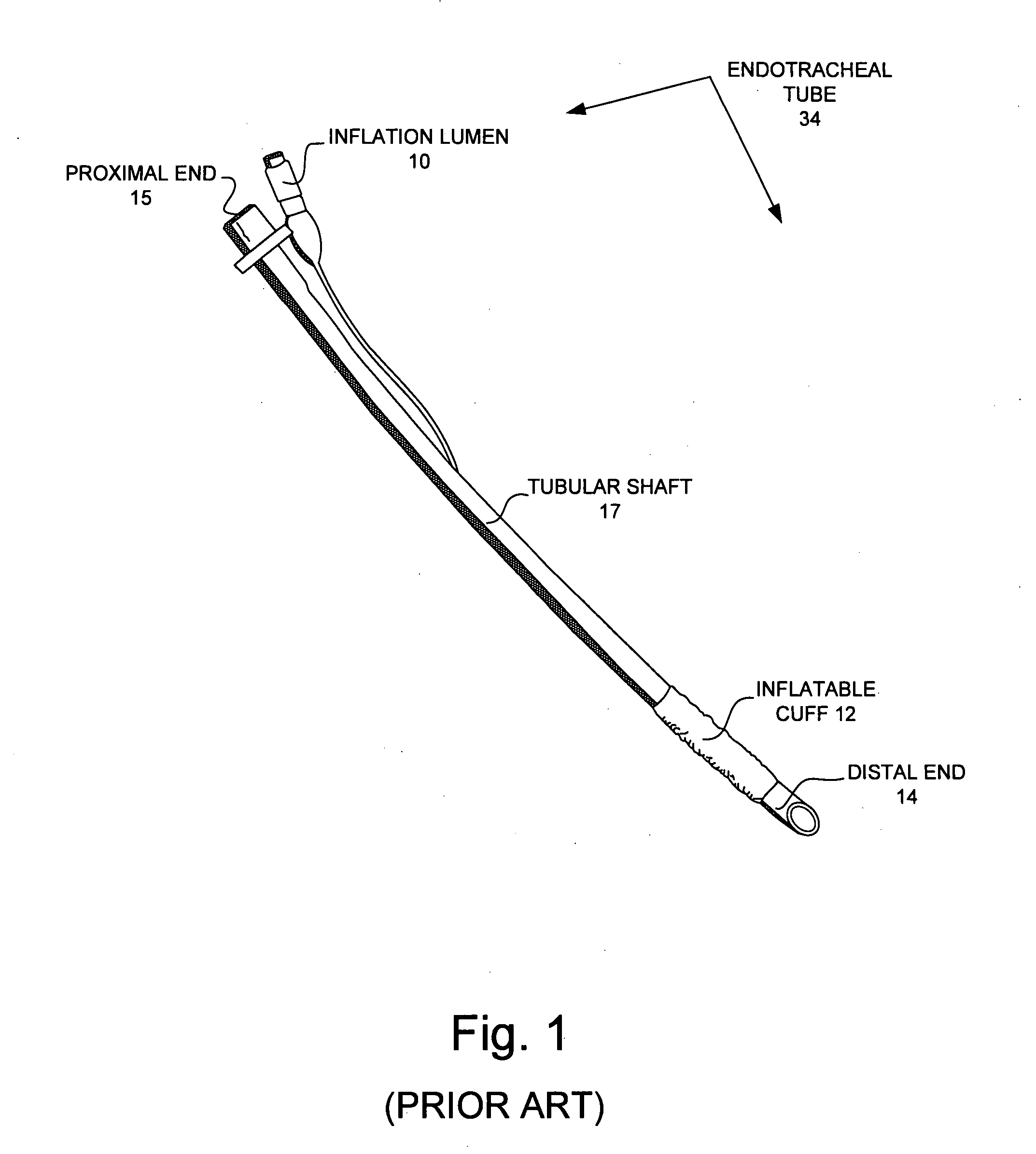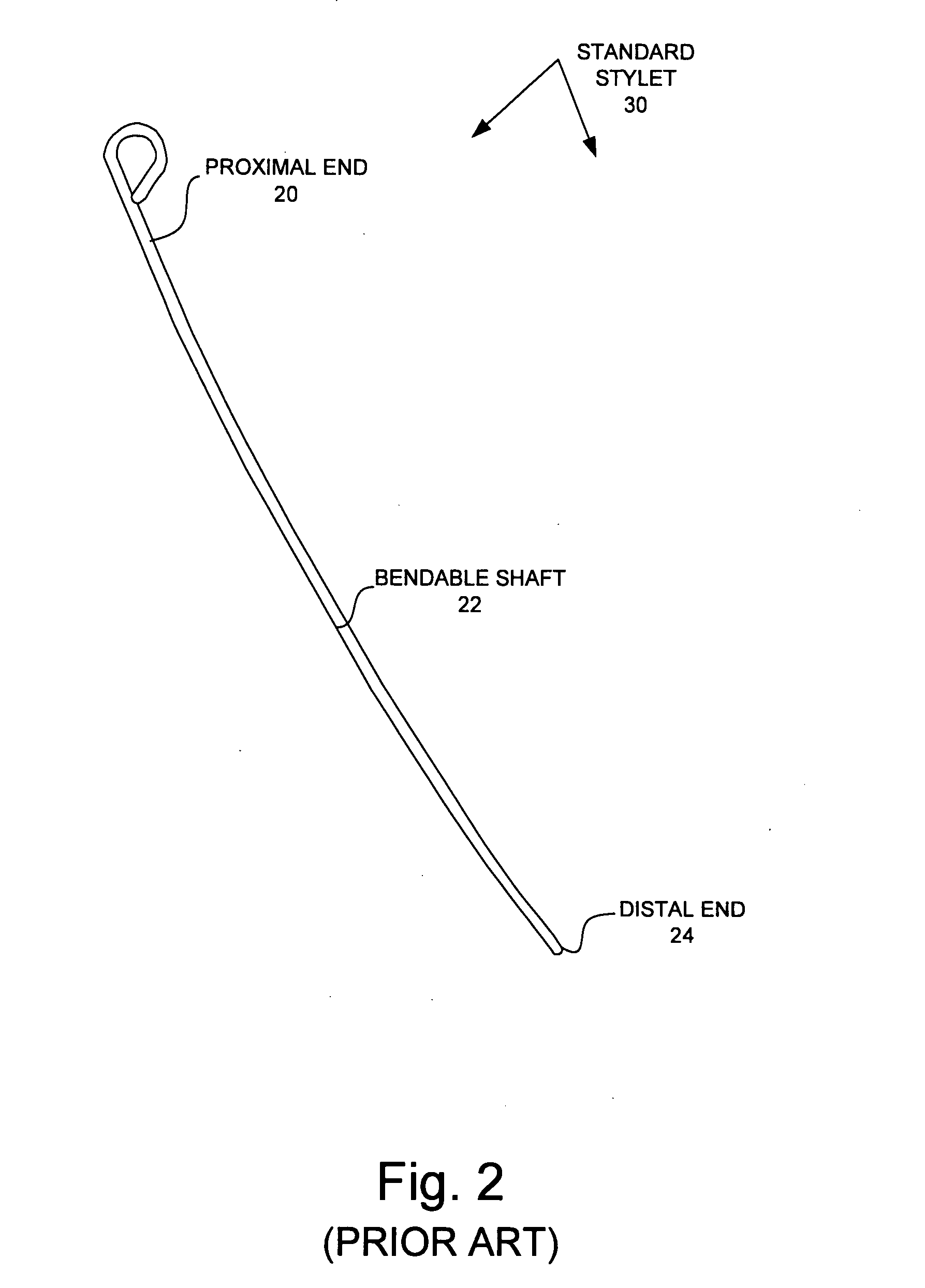Extendable lighted intubation stylet
- Summary
- Abstract
- Description
- Claims
- Application Information
AI Technical Summary
Benefits of technology
Problems solved by technology
Method used
Image
Examples
Embodiment Construction
[0045]FIG. 8 is a drawing of an extendable lighted intubation stylet 69 in accordance with one novel aspect. Extendable lighted intubation stylet 69 includes a sheath member 74, an extension member 76, and a light source 78. In one embodiment, light source 78 is a light emitting diode (LED).
[0046]Sheath member 74 has a proximal end 61, a tube section, a distal end portion 85, and a distal end 81. Sheath member 74 also has a handle portion 72 which is coupled to a T-shaped grip 70 at proximal end 61 of sheath member 74. Extension member 76 is slidably coupled to sheath member 74 and has a proximal end 88, a distal end portion 65, and a distal end 77. Light source 78 is disposed upon the distal end portion 65.
[0047]Also shown in this FIG. 8 is a power supply 82. The positive terminal of power supply 82 is connected to one terminal of a switch 71. The opposite terminal of switch 71 is connected to a terminal of a resistor 87. The opposite terminal of resistor 87 is connected to one of ...
PUM
 Login to View More
Login to View More Abstract
Description
Claims
Application Information
 Login to View More
Login to View More - R&D
- Intellectual Property
- Life Sciences
- Materials
- Tech Scout
- Unparalleled Data Quality
- Higher Quality Content
- 60% Fewer Hallucinations
Browse by: Latest US Patents, China's latest patents, Technical Efficacy Thesaurus, Application Domain, Technology Topic, Popular Technical Reports.
© 2025 PatSnap. All rights reserved.Legal|Privacy policy|Modern Slavery Act Transparency Statement|Sitemap|About US| Contact US: help@patsnap.com



